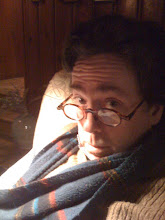Long ago, I found a book in my father’s bookshelves that was set up as a series of questions and answers on different topics, scientific, historical, and etymological. Factoids, they would be called today. One I remembered was “What is petrified lightning?" The answer in short is that it is the common name for what happens when lightning strikes a sandy beach, and the resultant configuration. The geological term is fulgurite. I wrote a poem based on that description:
THE GLASS BRANCH
They say when lightning strikes the shore, the path
it takes is like a quick nerve burrowing
beneath the beach. And in the aftermath
of fused sand, a branch of glass. A little
like thought made deed, the blast of energy
cools off in formation and turns brittle,
grounded in its own design. The storms subside.
Whether it stays buried or is exposed
and shattered will be determined by the tide.
I lost track of the book and even its title after my father died and have been looking for it since, thinking there were other opportunities to prompt poems.
One question that stayed with me was “What becomes of the heart of a hollow tree?” The peculiarity of the question was quirky enough to strike me as almost profound, the rhythm of the question was compelling and it forecast the song title “What becomes of the brokenhearted?" by decades. Surely, I could turn it into something.
When after many Google searches I finally found the book and checked it out of the library, I was disappointed. The answer to the question was unremarkable and obvious: the heart of a hollow tree decays. The other questions and answers in the book were unremarkable too. Perhaps in 1946 when the book was published, or even in 1986, it made for good reading, providing answers for questions the reader didn’t even know he had. But for some reason now it seemed trite and small, a compilation of newspaper column filler. It is a common reaction, I suppose, where things we have lost grow in importance because in memory and yearning, they assume a greater importance than they ever had at the time. So when they are finally found, a favorite toy, a photo, a missing book, the shock of recognition is a shock of the mundane. Better to have kept it lost.
The title was A Book About a Thousand Things by a newspaper man named George Stimpson. It can be had from Abebooks.com for $1.75.


Nice poem, David! And I can relate to your revisiting an old book. It hadn't changed, but you weren't the same boy and you brought something less, or at least different, to it than he did. I'm afraid to revisit my old childhood "Freddy" books about a pig, though I did just read a book I inhaled 35 years ago and it was good. I'd only remembered really one thing from it, though, and it turns out it was a fairly minor scene in the scheme of the book . . .
ReplyDeleteLovely poem. Out of chaos comes beauty.
ReplyDeleteWhat becomes of the heart of a hollow tree is a wonderful question and has lots of wonderful answers. It makes room for bees, woodpeckers, wood ducks, bears, racoons, chickadees, and a myriad of other animals. In Texas, several times I've seen cactus growing from a tree with a rotten heart.
So a tree with a broken heart becomes even more of a giving tree producing honey, and babies.
Watching pileated woodpecker babies with their really bad haircuts sit in the nest hole and watch for food, or getting to be at the nest site when day-old baby ducklings appear in ones and twos and the jump usually 50 or more feet to the ground, getting to listen to a hibernating bear snore, while her babies talk to each other, these are few of my favorite things from trees with broken hearts.